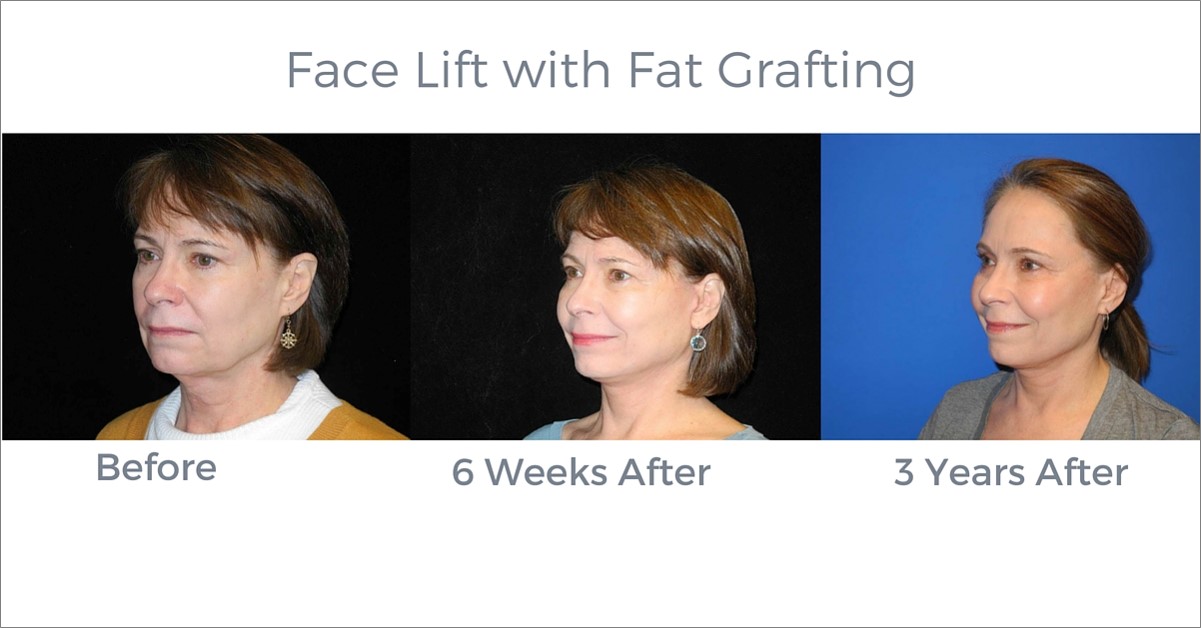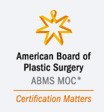

Before and after photo of patient with 1 year+ post operation showing the durability of results when combining fat grafting and facelift together.
For many patients, a facelift can reduce the visible signs of aging to restore a youthful appearance. When combined with fat grafting techniques, facelifts can create a natural and beautiful new look for patients who want to look and feel their best. Seattle based plastic surgeon, Dr. Shahram Salemy gave us some background on the benefits of fat graft transfers and facelifts.
What Is a Facelift?
The technical term for facelift surgery is rhytidectomy, which translates loosely to removal of wrinkles (although most surgeons agree that a facelift cannot remove every wrinkle, but often softens their appearance). Facelift procedures vary significantly depending on the desired results. Your plastic surgeon will take into consideration your desired results and facial characteristics, including your facial shape to determine the appropriate procedure.
• For traditional facelifts, the incision pattern generally starts at the hairline near the temples and extends back to the scalp behind the ear. Skin is released and excised along this incision to remove lines and wrinkles and to eliminate excess skin.
• Limited-incision facelift procedures work in much the same way as traditional rhytidectomy methods; however, the incisions made are shorter and typically require less time to heal, but often produce results that are not as dramatic.
• Neck lifts can be an option to rejuvenate sagging tissue and eliminate lines and wrinkles effectively. Patients with sagging jowls, loose neck skin and fat accumulation under the chin will benefit from a neck lift.
Each of these facelift procedures can be combined with fat graft treatments that provide added support for facial skin and a more natural, youthful look. By combining fat grafting with facelifts, volume is restored to the face where it has been lost.
Fat Graft Augmentation
A study published in the July 2015 issue of the scholarly journal Plastic and Reconstructive Surgery indicates that fat grafting techniques are increasingly being combined with facelift procedures. Roughly 85 percent of the surgeons surveyed stated that they had used fat grafting to augment facelifts and to produce improved results for their patients. Fat graft techniques usually require several steps that may include the following:
• Liposuction is performed to collect the fat used for these advanced plastic surgery procedures. The abdomen is the most commonly used site for fat collection.
• The fat is then purified and processed to ensure the best possible results.
• Fat is then injected into cheeks, in the area just below the eyes and along the folds of skin that lead from the nose to the corners of the mouth.
The results of these fat graft procedures can promote a more natural and youthful appearance for patients after a facelift and can provide added volume and fullness for the entire face.
Benefits of Fat Graft and Facelift Procedures
By integrating fat grafting with facelift procedures, plastic surgeons can add volume and fullness to cheeks while correcting the tissue laxity sometimes experienced as a part of the aging process. This can restore a youthful face shape and a more attractive profile for plastic surgery patients. The combination of these two cosmetic surgery techniques can produce synergy that can enhance the beauty and youthful appearance of patients to a far greater degree than with either procedure alone.
By incorporating the latest technologies and medical techniques, cosmetic surgeons can ensure the most effective and lasting results. This can provide patients with a more youthful appearance and a welcome boost in self-confidence.
To view results of different facelifts check out the before and after photos.















